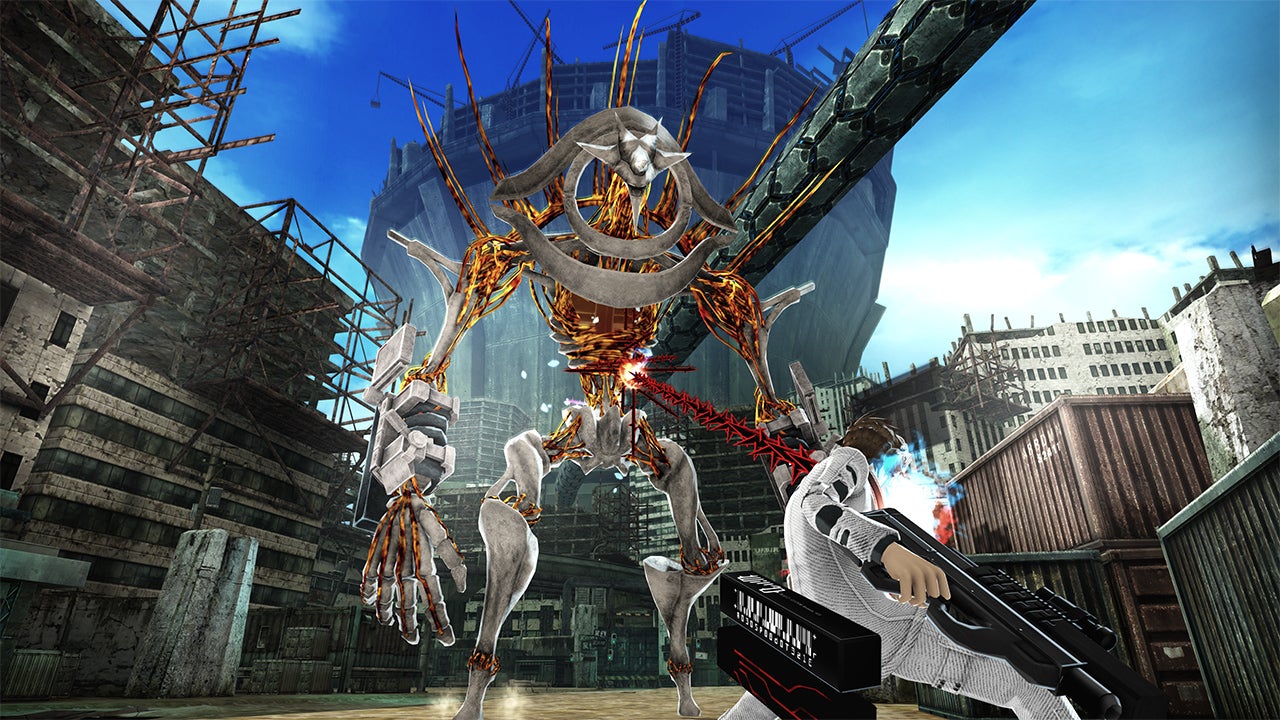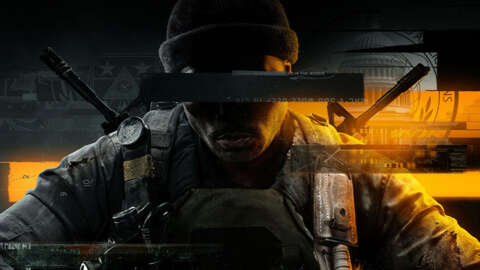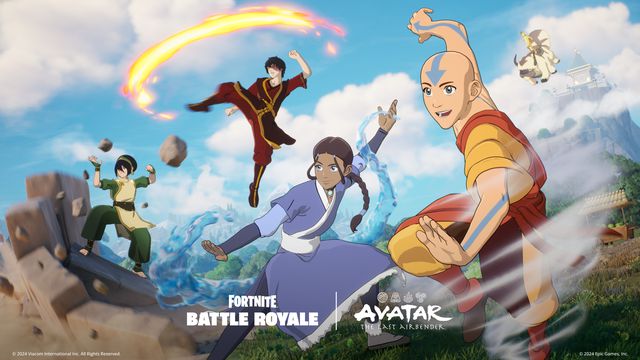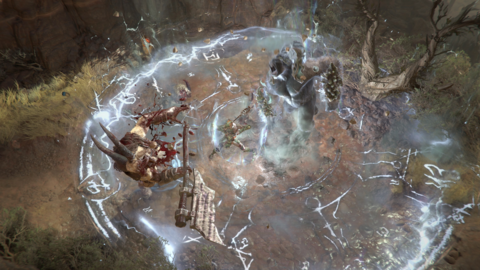Ah yes, Freedom Wars, the seemingly last bastion of the PlayStation Vita, is finally moving onwards from Sony’s retired handheld. With the help of Bandai Namco, developer Dimps (partially made up of members from the original Freedom Wars development team) is bringing the Monster Hunter-style action-RPG to modern platforms. It became a hit as a Vita exclusive in 2014 for its unique persistent world mechanics and dystopian sci-fi premise that made it more than just something that played off its influences. And I can tell you first-hand that there’s a certain excitement to Freedom Wars Remastered since it’s as true to the original release as you could possibly expect.
I had the chance to get roughly four hours of hands-on time with a preview build of Freedom Wars Remastered on PlayStation 5. After spending about an hour with the tutorial to shake off the decade of rust, I jumped back into high-level operations. In the following three hours, I cleared several instanced missions hunting massive monster-like machines and rescuing civilians from their clutches – and unwittingly tacked on extra years to my prison sentence by acting a fool back in the Panopticon you call home.
If you’re not familiar with Freedom Wars, or need a refresher since it’s been quite some time, it takes place in a dystopia set in the far future where the surviving population fights over limited resources. People are either wardens running a Panopticon or prisoners (aka Sinners) stuck in indentured servitude and forced to fight for “a greater good.” You play as a Sinner, and by taking on operations and contributing resources to your Panopticon, you shave years off your…1,000,000-year prison sentence. Aside from sending yourself to instanced hunts, there is a story that develops as you get deeper in operations and learn more about fellow Sinners on your prison block.
You’re also under constant surveillance by an android companion, called an Accessory, who applies disciplinary action, and you earn little bits of freedom as you clear more missions. Something worth noting here is that the remaster features expanded voice acting and English audio – that includes the androids, which has been done oddly. Android characters are voiced through a primitive text-to-speech style modulator that clearly mispronounces words; it’s said to be intentional to add to the creepy dystopian vibe, but it comes off rather tacky. Overall, it’s a dark premise, for sure, but it’s satirical in a way that has only gotten more bleak as time goes on.
I talked to Takashi Tsukamoto, the original director and now producer for the remaster, and Tetsunosuke Seki, the director for the remaster, and they reflected on the commentary of Freedom Wars. Tsukamoto saw new developments in Japan as inspiration for the dystopian vision of Freedom Wars’ story, saying, “When the original version came out 10 years ago, there was a thing called My Number in Japan, similar to the US with social security numbers. This was a very new concept in Japan 10 years ago. Citizens of Japan didn't have a social security equivalent and since it was a brand new idea coming up, there were a lot of people who were against it. Like, don't put a number on us. I guess living in a first-world country like Japan, they always have your information on hand. You're on file. It's kind of like you're being in constant surveillance. When you're walking around the city, there's cameras everywhere. There's a little bit of a parallel between that and this game. Obviously, we're not in a prison, but the idea of being in constant surveillance and people having our information was a very strong concept we wanted to work with when creating this game. In the game these people are prisoners with million-year sentences, it’s not a one-to-one, obviously. I mean, I hope I'm not a prisoner!”
The story and premise remain intact in the remaster, exactly as it was in the 2014 release, and that faithfulness extends to the gameplay mechanics, for better and worse. Aside from the control scheme being updated to make sense for modern gamepads, the gameplay is pretty much one-to-one as I remember it. Lock-on targeting, third-person shooting, melee combos, the Thorn system, all of that is unchanged – so if you thought it was janky back then, you’ll definitely find it janky now. Don’t come in expecting it to be streamlined or revamped to feel like a new release. However, there’s a novelty to the way Freedom Wars experimented with unique mechanics and brought it all together in a fully fledged action-RPG on Vita.
While every character has a melee weapon for basic light and/or heavy attack combos and a firearm to take shots from a distance, it’s the Thorns that made Freedom Wars standout. Thorns are akin to hookshots or Spider-Man’s webs – you can attach these to enemies to slam them on the ground or zip right onto them to get in melee range. It’s also the key to traversal, letting you reach high-up places or quickly dart around the battlefield to stay nimble. Considering it’s a little sticky since it remains unchanged, it still works really well as an intuitive gameplay mechanic and a premier feature that made Freedom Wars a ton of fun to begin with.
There’s still a thrill to attaching your Thorn to a specific part of a beastly machine, frantically mashing the circle button to pull it to the ground, leaving it staggered and vulnerable to melee combos. And it’s also a novelty to use your Thorn to pull yourself toward a towering robot to mount it and sever one of its limbs before backflipping off to avoid getting tossed down, not unlike the rush we all got that same year scurrying up the backs of the Titans in Titanfall. Thorns serve other functions as a means for utility on the battlefield, like setting up traps, throwing out area-of-effect heals for your party, or casting powerful shields. It’s not terribly complex, but there’s beauty in its simplicity, and I still got a kick out of it while playing the remaster.
It remains my favorite thing in Freedom Wars – using my Thorn to latch onto the pod of an Abductor to rip out the hostage it's captured, and jumping off of it with the hostage in your arms before dashing back to safety. Not only are you caught in the fray of your party fighting this huge robot, but you’re risking heavy damage if you can’t execute it swiftly enough. And man, it feels good to get away with it scot-free.
Because this is a faithful remake, I found the structure of operations – the instanced missions that mainly drive the gameplay loop – to be somewhat repetitive. Even at Code 4 operations, which are several hours deep into the story, many of the maps and enemy types are reused. Different missions pop up to add variety, such as hostage rescues, wave-based encounters, or straight-up brawls of attrition against hulking damage sponges that’ll take 10 to 15 minutes to conquer. However, it tends to fall into a routine after long sessions; not that it’s absolved of its shortcomings that were apparent back in 2014, but the repetition was better suited as a handheld game played in shorter bursts.
Freedom Wars doesn’t necessarily evolve fundamentally as it goes on, and from what I can recall from my time on the Vita version and now with the remaster, you settle into a playstyle and stick with it throughout. You’re still upgrading weapons with the materials you gather and earning new ones from mission to mission. There’s a decent amount of weapon types to mess around with before settling on what works for you – personally, I loved the chainsaw sword for chunky melee damage and the burst-shot rifle that could melt fodder from a distance. The one quality-of-life change worth noting here is that weapon crafting and upgrades are streamlined to take the old randomized aspects out of the process. This aligns with crafting systems seen in modern games, and this was a deliberate decision according to Tsukamoto and Seki.
The biggest idea behind Freedom Wars was the persistent world aspect of Panopticons. Players would sign onto their own Panopticons based on region and the missions they take on would all contribute to its status, and you would be ranked against rival Panopticons in perpetuity, as if it was this ongoing multiplayer competition without having to do direct PvP. That remains intact with the remaster. Traditional multiplayer and co-op was a major part of the original Freedom Wars, though, and it’s also being preserved. Although I didn’t get to try it out, Tsukamoto and Seki both said that matchmaking has been revamped to reflect that of modern games, which will be a vast improvement over the original’s system.
Part of me sees Freedom Wars Remastered more as a novelty – a Vita classic that is now at least playable on modern platforms with its most important parts unsullied, for better or worse. It’s fundamentally the 2014 game with some quality-of-life necessities. It was a perfect fit for Sony’s last handheld, and a blast to sink hours into, competing with other Panopticons across your region and reducing your prison sentence in futility. I’m not sure if it’s going to hit the same way it did 10 years ago, but I do believe this is a big win for preservation, making a cult classic much more accessible in a faithful form. Freedom Wars was experimental for its time, and it tried new ideas that are great to see holding up relatively well – even just constantly adding years to your sentence for minor infractions as you roam your prison block was an annoying but good goof that fed into the game’s overall themes.
Novelty or not, both Seki and Tsukamoto stated that remastering the original game is the necessary first step in hopes of revitalizing the series. Tsukamoto said, “We’ve been wanting to create something like this for a long time, but we really didn't have the opportunity. As Dimps [the development team], we’ve been looking for opportunities to release something, maybe a sequel – something related to Freedom Wars. However, it was very difficult to set up a team and nothing was really lining up. At some point, we said maybe a remastered version of the original would be good.” As for why it made sense now to revisit the series, he continued, “The opportunity never really presented itself until now. We were able to come to an agreement with Sony regarding the license and they were able to partner up with Bandai Namco, and it just so happens that it’s about 10 years later that all of it started coming to fruition.”

I followed up by asking about how they’ll define success for the remaster and how a sequel would factor into their plans in the future. Tsukamoto said, “What success would look like is for this game to do well, and well enough that we could take the next step into potentially releasing a sequel.” He continued by saying, “As much as we’d like to share it with you, we don't know if there's going to be a sequel yet of course, but if there is a sequel, we have tons of ideas we’d want to implement into said sequel.”
It’s pretty wild to see a Vita game remastered with many of its assets true to what they looked like in original form. On PlayStation 5, Freedom Wars Remastered runs at 4K resolution and 60 frames per second, which is really nice, although it does create a sort of uncanny valley effect when the character models, animations, and environments haven’t gotten a makeover. I also played a bit of the Nintendo Switch version in handheld mode and though it’s considerably lower resolution and only ran at 30 fps – it’s still very much playable, but it’s a bit disappointing to see a former Vita game struggle on Switch. While it’s definitely not a technical marvel by any measure, everything that made the original a Vita classic either remains intact or has been touched up to mitigate frustrations not present in modern games.
You’ll be able to start serving and working time off of your 1,000,000-year sentence when Freedom Wars Remastered launches on January 10, 2025 for PlayStation 4 and 5, PC via Steam, and Nintendo Switch.









